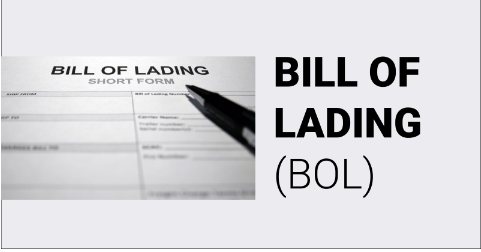The Bill of Lading or BoL is an important official document that finds its importance in the shipping industry. It is typically used for effectively understanding the meaning as well as implications for respective operations. There are different types of bills of lading, with each type used in particular conditions for specific purposes. It is difficult to be successful or functional in the field of shipping if you are not aware of the operation of the bill of lading.
The bill of lading or BoL serves to be a legal document issued by a carrier to the shipper. It features the details of the cargo that gets transported. Some of the core details of the bill might include types and quantities of goods that are shipped. It will also feature the delivery addresses of the shipping product. Some of the common types of bills of lading are order bill of lading, straight bill of lading, release bill of lading, master bill of lading, and so more.
Different Types of Bill of Lading
Some of the common types of bill of lading are:
#Straight Bill of Lading
It is also referred as the Consignment Bill of Lading. In the given case, the BoL serves to be non-negotiable. The given type of BoL is used when goods are paid for already or there is no requirement of payment on delivery. All information required from the consignee is identified before handing over the cargo to them.
The transportation as well as delivery get pre-negotiated without any room for amendment. Upon delivery, it serves as the receipt. Some of the sub-categories of the straight bill of lading are Short form bill of lading and others.
#Order Bill of Lading
It is the bill of lading that you would come across while on-board. This bill of lading is meant for the consignee or the order. It is the named consignee who will be the owner of the cargo. Otherwise, the consignee can also think of ordering the shipment to be delivered to some other party by endorsing the BoL to the respective party.
As the ownership or title of the BoL can be transferred, Order BoL serves to be a negotiable document.
#Ocean Bill of Lading
It is the Bill of Lading needed when the cargo is being shipped to cross international ocean waters. It is a collective form of invoice as well as evidential document that can serve as the receipt from the carrier to the shipper. Along with the standard contents, the Ocean Bill of Lading is responsible for specifying the packaging utilized along with the cargo’s value.
Once the items are collected, the shipper will receive the contract. It is expected for both the shippers and carrier to sign the contract. Upon this, the receiver will then be provided the document to sign the same.
#Negotiable Bill of Lading
This category of BoL or Bill of Lading is utilized when the shipper would like to ensure information about particular terms & conditions. The shipper is also expected to make sure that these terms & conditions are fulfilled before the shipment is ultimately released to the receiver.
Therefore, it is possible to use negotiable bill of lading when the payment from the receiver will be backed by the Letter of Credit. Banks usually need the Bill of Lading to be delivered to their specific orders in case the letter of credit is used in the form of an exporter, importer, or professional banker.
#Bearer Bill of Lading
The Bearer BoL is known to feature the bearer as the cargo’s owner. In a Bearer BoL, there is no mention of the consignee. This type of BoL is available seldom only as there are major risks involved -like the misuse of the given type of bill of lading.
In this variant as well, the ownership or title of the BoL can be transferred. This BoL serves as a negotiable document.
#Switch Bill of Lading
It is referred to as the duplicate version of the BoL for a cargo for which the bill of lading was issued already. Switch BoL is usually requested by the consignee from the cargo’s owner when the consignee does not wish to reveal the identity of the cargo’s shipping to the new buyer.
#Inland Bill of Lading
There is a requirement of additional documentation in case the cargo will be traveling through land initially before it crossed international waters. It is the document that is needed for the materials to be delivered to the shore before getting shipped to another nation. Both the inland as well as ocean BoL are expected to export cars in most cases.
Conclusion
A Bill of Lading or BoL is an important document aimed at helping members of the entire supply chain to move cargo seamlessly.


